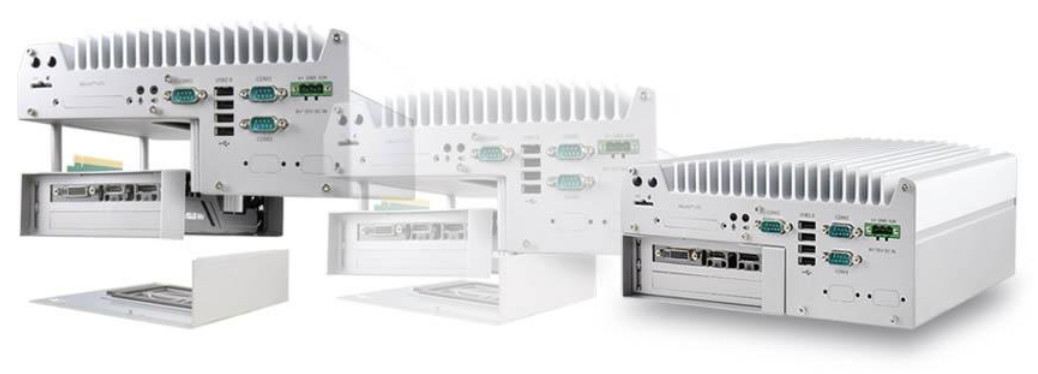In this article:
What is the difference between GPU and VPU?
Learn the difference between Graphic Processing Units (GPUs) and Vision Processing Units (VPUs).
It is becoming increasingly common that small ruggedized PCs are tackling compute-intensive tasks that call for powerful graphics hardware that enable leading-edge performance in a fanless, solid state system which is hard to do, as it must equivalate power consumption, cooling capacity, cost and system reliability.
Assured Systems build a wide range of Industrial GPU Accelerated PCs for machine vision, learning and AI applications requiring additional processing power while maintaining a ruggedized design. These systems typically integrate either a VPU (Vision Processing Unit) or GPU (Graphics Processing Unit) and have the option to maintain a fanless design.
What are the differences between a VPU and GPU?
|
Graphics Processing Units (GPUs) |
Vision Processing Units (VPUs) |
| Processing with CUDA Core | Processing with OpenVino |
| High Power Consumption | Efficient Power Consumption |
| 16x PCIe Card | mPCIe Card |
| High Performance | Efficient Performance |
|
Example Applications:
|
Example Applications:
|
What are the capabilities of an Industrial VPU Computer?
VPUs take the load off the CPU by assigning tasks to an application-specific co-processor for object, facial recognition and machine learning functions using less heat and power than a GPU. There are a wide range of VPU and system customization options with compact industrial and fanless designs for challenging environments and perfect for object recognition and machine learning applications.
Industrial VPU computers offer application-focused performance for reliable, long-lasting, low power platforms for object and facial recognition, security access and machine learning applications using Google Tensorflow and Facebook Caffe frameworks.
For flexible image data processing, industrial VPU computers match your image and object recognition needs with VPUs configurable in a range of PCs, from compact edge devices to Hexa-Core powerhouses.
Additionally, for a durable and industrial design the low thermal and power footprint enables vision processing to move further out on the edge and stay protected with compact, fanless industrial enclosures.
What are the capabilities of an Industrial GPU Computer?
Dedicated graphics cards work as co-processors to enable advanced image processing and are available in a range of industrial fanless, actively cooled, and removable cassette configurations. There are a wide range of GPU and system customization options with long-lasting industrial design for challenging environments and perfect for deep learning, machine vision, Al, and high-end image processing. The durable, industrial design keeps your GPU based application cool, protected and running longer with durable hardshell design, engineered specifically for challenging evironments.
Industrial GPU computers provide a application-focused performance with the dependable platform for autonomous driving, vision-based quality assurance, medical imaging and other graphically depending tasks.
Your standard consumer-grade high-performance PC boasts multiple fans and heatsinks, with powerful GPUs that can pump out 200 watts or more of thermal design power (TDP). This kind of approach is problematic for Industrial PCs, which leverage solid state designs for maximum efficiency and reliability. Nevertheless, it’s becoming progressively common to find industrial solutions that bridge the gap.
Modular, cassette-based designs enable a fanless, sealed-case Industrial PC to accept a discreet graphics card module, complete with fan and heatsink. The arrangement makes it possible to leverage powerful GPUs for specific computational tasks such as image analysis and display. The Nuvo-5095GC system from Neousys is an accomplished example of this modular approach that allows for the GPU cassette to be easily to swapped out for service or upgrading without requiring replacement of the entire system.
Example NUVO-5095GC industrial fanless PC with external GPU cassette
An additional solution utilizes the range of available low profile, lower power half-height graphics cards, which run directly off a standard PCI-e expansion slot, helping reduce cost while offering a compact footprint and efficient cooling. Half-height graphics cards (sometimes called mini-cards) are effective for graphics subsystems with a TDP below 75.
Custom motherboard designs can also help combat some of the key GPU complications by strategically positioning components for maximal cooling and electrical efficiency. However, the small surface area of compact IPC cases are a challenge, and case temperatures must stay low enough that they don’t threaten to burn users who touch them. Ultimately, this solution relies on the continued advancement of graphics processing technology, which promises higher computational performance without higher thermal output. Of course, not all industrial PCs are fanless. In applications where environmental concerns aren’t as prevalent and active cooling can be tolerated, users can elect to integrate dedicated graphics solutions into a fanned chassis.
Match your performance needs for fast and powerful image processing with our selection of GPUs ranging from space-saving half-height cards to full dual-card solutions and everything in between.











